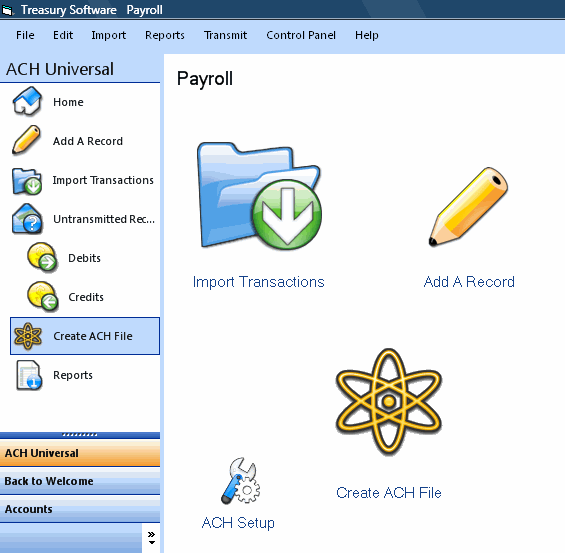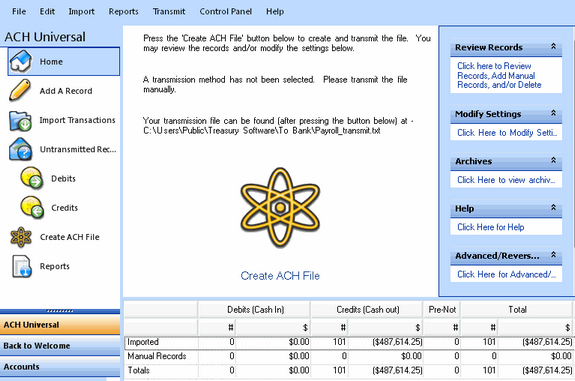Create and Transmit File |

|

|

|
|
Create and Transmit File |

|

|

|
|
|
||
Create and Transmit ACH File
You are now ready for the final step: creating the ACH pay file and transmitting to the bank.
Click on Create ACH File from the left hand navigation pane or alternatively, click the Create ACH File button in the center of the homepage.

The Create ACH File screen is where the file to be uploaded is created.
The second paragraph lists the transmission method. In almost all cases, you will upload your file to your bank through their website. A transmission method of None will create the positive pay file, at which point you should log on to your bank's website and submit it to them. Your bank will provide you with instructions for doing so.
The third paragraph displays where the Transmission File will be saved. The default location for the file is the C:\Program Files\Treasury Software\Treasury Desktop\To Bank directory (on XP) or C:\Users\Public\Treasury Software\To Bank (on Vista). The default file name is the name of the account, followed by an underscore and the word ‘transmit’. The file will always have a .TXT file extension. For example, the account named Payroll would create a transmit file named Payroll_transmit.txt.
The Review Records link on the Right Side Explorer Bar allows you to access the Reports Section for review or deletion of Records
Click Create ACH File to create the file.

ACH Universal will ask if you want to view the file. Select Yes if you want to verify the format or review the file. Otherwise click No.
At this point, transmit the file to your bank using their procedures.
Congratulations! You have completed your first ACH file transmission.
If you have any questions, please consult our FAQ. This contains answers to many common questions from first-time ACH Universal users.
Next Step
Review our FAQ for answers to many common questions.
Next: FAQ >>